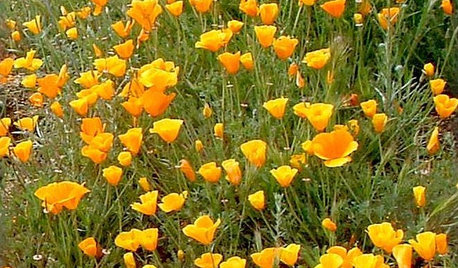removal of osage orange in Illinois
union2045
18 years ago
Related Stories

SMALL HOMESHouzz Tour: An Illinois Loft Sparks Renovation Fever
Home improvement newbies (and newlyweds) find joy and a new income source while redoing their space themselves
Full Story
ORANGEGuest Picks: Everything Orange
Furniture and accessories in orange, persimmon, pumpkin and paprika are in season now
Full Story
FALL GARDENING11 Trees for Brilliant Fall Color
Give your landscape the quintessential look of autumn with the red, orange and yellow leaves of these standouts
Full Story
COLOR10 Great Places for Rich Fall Colors Year-Round
Use nature’s burgundies, golds and oranges in these select spots for a comforting feel no matter what the season
Full Story
GARDENING GUIDESGreat Design Plant: California Poppy
Fall planting: California's state flower offers a glorious spring show and spreads readily in gardens under the right conditions
Full Story
KITCHEN OF THE WEEKKitchen of the Week: Fans of Traditional Style Go For a ‘Mad Men’ Look
The TV show inspires a couple to turn their back on the style they knew and embrace a more fun and funkier vibe in their kitchen
Full Story
EDIBLE GARDENSWhy Grow Quince? For Beauty, Fragrance and Old-Time Flavor
Delightfully perfumed fruit and lovely spring blossoms make this apple and pear cousin worth a spot in the garden
Full Story
GARDENING AND LANDSCAPINGHow to Make a Pond
You can make an outdoor fish paradise of your own, for less than you might think. But you'll need this expert design wisdom
Full Story
MOST POPULARKitchen of the Week: Broken China Makes a Splash in This Kitchen
When life handed this homeowner a smashed plate, her designer delivered a one-of-a-kind wall covering to fit the cheerful new room
Full Story
WINTER GARDENING6 Reasons I’m Not Looking Forward to Spring
Not kicking up your heels anticipating rushes of spring color and garden catalogs? You’re not alone
Full StoryMore Discussions







joepyeweed
sam_md
Related Professionals
Maple Valley Landscape Architects & Landscape Designers · Suitland Landscape Contractors · Woodbury Landscape Contractors · Chicago Ridge Landscape Contractors · Tyngsboro Landscape Contractors · Syracuse Fence Contractors · Arcadia Fence Contractors · Hawaiian Gardens Fence Contractors · Lakewood Fence Contractors · Santa Ana Fence Contractors · Sun City Fence Contractors · Westmont Fence Contractors · Winter Park Fence Contractors · Bozeman Siding & Exteriors · Panama City Siding & Exteriorsjoepyeweed
ahughes798
nyssaman
pablo_nh
pablo_nh
ahughes798
pablo_nh
lkz5ia
joepyeweed
nativescaping
sam_md
joepyeweed
gerlawgoody5_yahoo_com
greenman28 NorCal 7b/8a
brandymulvaine
rbrady
kyandpetefreeandwild_hotmail_com
joepyeweed
greenman28 NorCal 7b/8a
fossilbob
lsenders
jimbobfeeny
poaky1